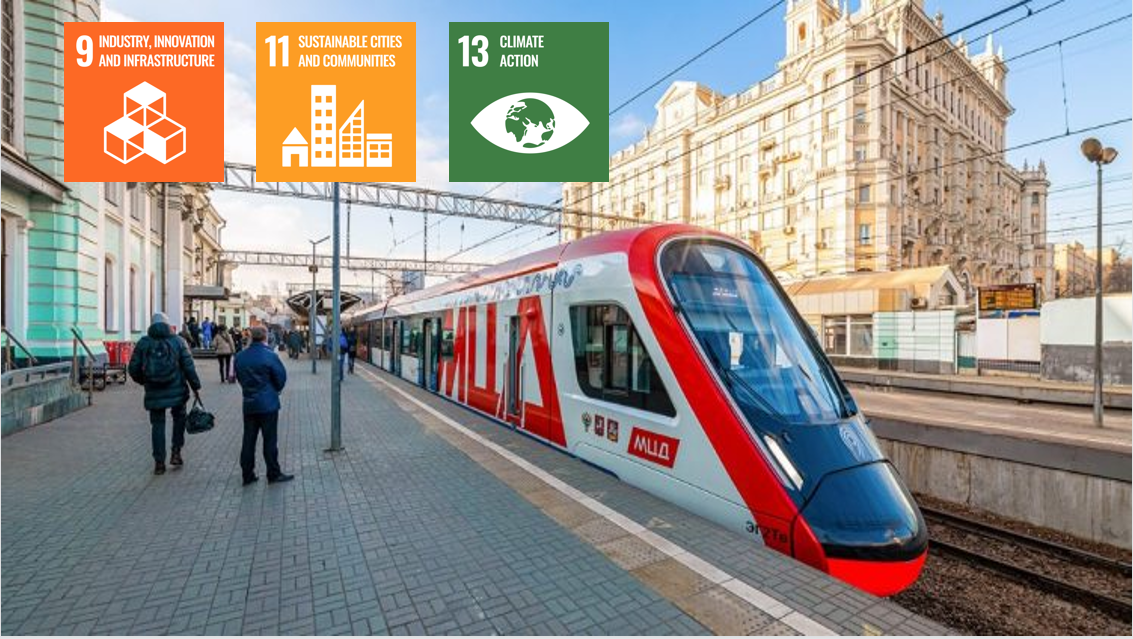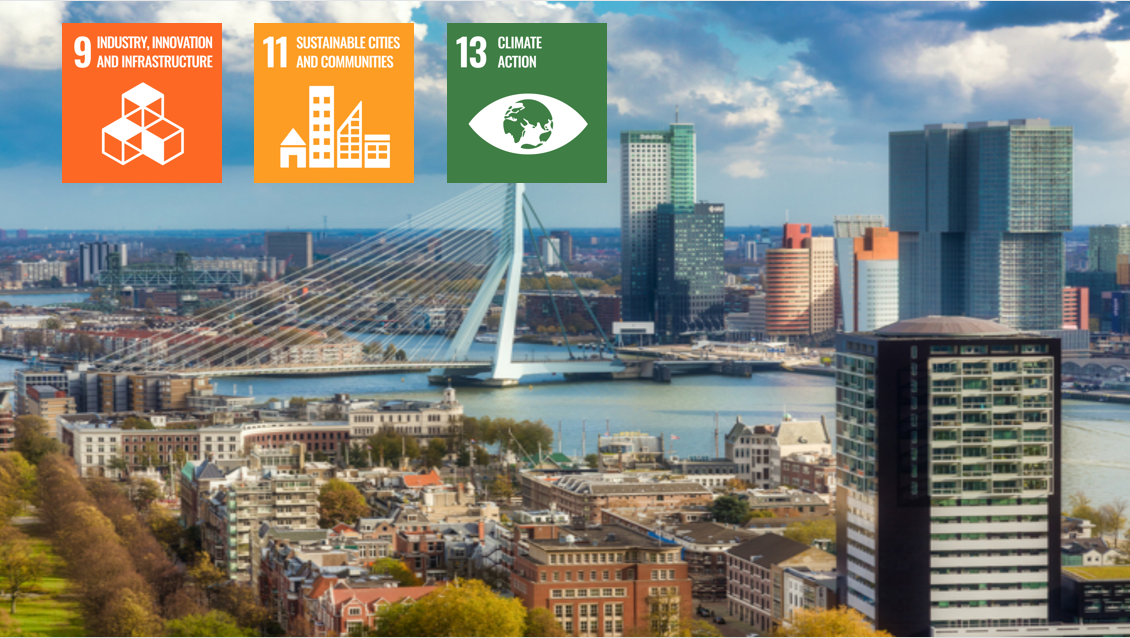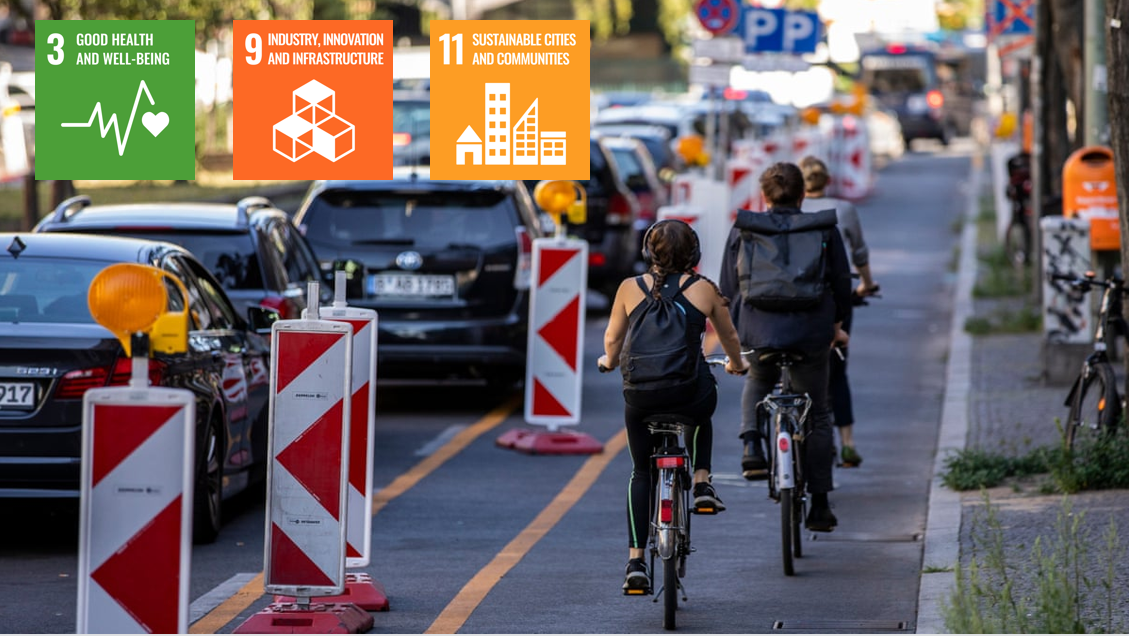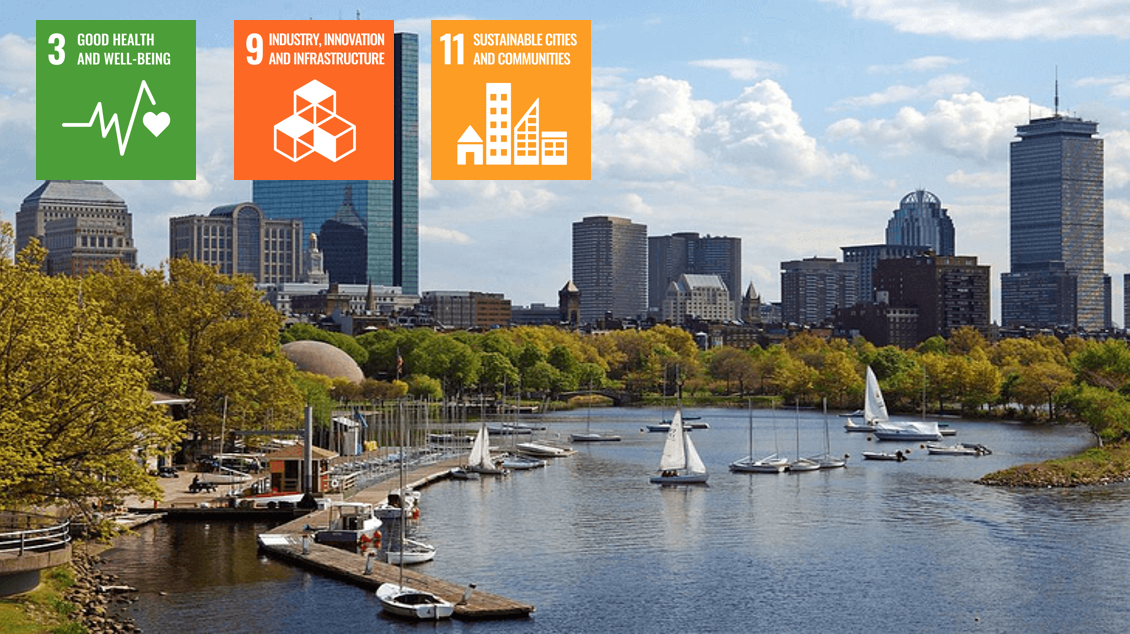【FOCUS】Focus on Urban Traffic Problems, Alleviate Traffic Congestion
With rapid economic growth, urbanization has accelerated. The growth of transportation demand is driven by the process of urbanization. At the same time, the raising number of motor vehicles in large cities makes the road in cities with heavier load, traffic congestion, noises and so on. SDG9 refers to develop quality, reliable, sustainable and resilient infrastructure, including regional and trans-border infrastructure, to support economic development and human well-being, with a focus on affordable and equitable access for all. This week’s IN FOCUS features five innovative urban solutions to transportation problems.
Intelligent
Transport System
Moscow,
Russia

Moscow is the
capital city of Russian Federation with a population of 12.5 million citizens.
Most places of employment are concentrated in the city center, within the 3d
Ring Road, while most citizens live near or further towards Moscow Automobile Ring
Road. This causes a large daily migration 77% of them are daily commuters.
The Intelligent
Transport System(ITS) allows for monitoring and regulating traffic, predicting
traffic situations, and balancing road capacity with actual traffic flows. The
system consists of 2048 CCTVs and 1402 still cameras installed at various
places throughout the city. The video surveillance cameras are connected to a
central control and monitoring room at the Moscow Traffic Management Centre,
where a large digital screen displays real-time images of traffic movements and
information on road conditions. Besides improving traffic regulation, to help
improve the environmental impact and to reduce polluting emissions, only trucks
conforming to the emission standard Euro-3 or higher are allowed to enter
Moscow’s downtown. More than 900 road cameras monitor truck traffic on a daily
basis.
More info:
https://use.metropolis.org/case-studies/intelligent-transport-system
Marketplace
for Mobility
Rotterdam,
Netherlands

As one of the
largest logistic hubs in the world, Rotterdam is facing serious traffic
congestion problems, especially during rush hours. Reducing car traffic at peak
times has become a priority for the municipal government.
To improve
accessibility in the Rotterdam Region, the Marketplace for Mobility brings
together supply and demand at one place and helps to create a larger range of
mobility alternatives. The marketplace brings together a range of different
‘peak traffic avoidance services’ to encourage commuters to leave their cars at
home. The services can include shuttle buses, traffic information apps and
fitness schemes, promoting walking or cycling instead of driving. The city was
particularly in favour of services that address issues besides accessibility
and that improve quality of life for citizens.
More info:
https://use.metropolis.org/case-studies/marketplace-for-mobility-de-verkeersonderneming
Oslo’s
Traffic Agent app
Oslo,
Norway

Oslo is keen for
its 44,000 primary school children to walk or cycle to school. Yet parents were
increasingly concerned about the speed of traffic and the safety of crossings.
Many were asking repeatedly for safety improvements or choosing to drive their
children to school. The city decided a comprehensive review of traffic security
for children was needed so that it could develop a plan to make streets safer
and walking to school more popular.
The Traffic Agent
is a mobile app to determine road maintenance needs. It targets primary school
children, who are some of the most active walkers in Oslo. Using a
‘gamification’ approach, children can report dangerous spots or problem areas
on their way to and from school. This data is fed into the Agency for Urban
Environment’s traffic and technology section, which uses it to prioritise road
maintenance needs for the next year’s budget. The app allows children to input
anonymously, although data can be filtered by class, school and district. It
uses a voice and animations to guide them through the process. The data can be
used in class to discuss the safest route to school.
More info:
https://use.metropolis.org/case-studies/the-traffic-agent
Pop-up
bike lanes
Berlin,
Germany

During the
pandemic, the demand for individual mobility options changed dramatically in
Berlin. While overall traffic declined noticeably, an ever-growing number of
Berliners decided to choose bicycles as their preferred mode of transport –
allowing an active and contact-free way to travel.
The city of Berlin
had been planning and conducting the rollout of dozens of kilometers of bicycle
infrastructure before the COVID-19 outbreak. Nevertheless – with the strict
distance requirements that were put in force, to reduce the risk of infection,
with a view to the rising number of cyclists, and to relieve congestion on
streets and public transport – an urgent need for quick improvements arose. This
is why the Senate Department for the Environment, Transport and Climate
Protection – in close collaboration with Berlin’s boroughs – took immediate
action and set up “pop-up bike lanes” (or: temporary cycling infrastructure) in
a number of corridors that promise fast and considerable benefits for cyclists.
More info:
https://use.metropolis.org/case-studies/pop-up-bike-lanes
Vision
Zero Boston
Boston,
United States

Between 2010 -
2014, 79 people were killed in a motor vehicle, bicycle, or pedestrian crash on
Boston roads. To identify high crash areas, the City of Boston’s Department of
Innovation and Technology created crash cluster maps for each mode of
transportation (pedestrians, bicyclists, motorists). Through this crowdsourced
mapping system, citizens can report safety concerns in real time to the city
administration. The objective is not only to help local government identify
problem areas in the city, but to create civic engagement for the strategy and
awareness for the road safety issue. Six months after the map was launched,
more than 11,000 citizen safety concerns had been registered on the platform,
helping to identify new safety priority zones. Common safety concerns reported
by citizens include obstructed views or chronic speeding. Vision Zero Boston
prioritizes safety and takes a people-first approach to transportation and
community building with an aim to make the city more walkable, bikeable,
transit friendly and safe for drivers.
More info:
https://use.metropolis.org/case-studies/vision-zero-boston
Originally published on use: urban sustainability exchange. use is an open knowledge exchange platform dedicated to sustainable city making.
Visit use: https://use.metropolis.org/


 In Focus | World Cities Day: People-Centred Smart Cities
In Focus | World Cities Day: People-Centred Smart Cities City Stories | Fostering community resilience: A lifeline for the Central African Republic
City Stories | Fostering community resilience: A lifeline for the Central African Republic In Focus | Innovative Education, Empowering Futures
In Focus | Innovative Education, Empowering Futures




















 Tel: +86 020 3780 4434
Tel: +86 020 3780 4434 Email: info@guangzhouaward.org
Email: info@guangzhouaward.org Adress: Unit 01-7, 28th Floor, No. 7, Chunrong 3rd Road, Tianhe District, Guangzhou, Guangdong, 510000, PRC
Adress: Unit 01-7, 28th Floor, No. 7, Chunrong 3rd Road, Tianhe District, Guangzhou, Guangdong, 510000, PRC




